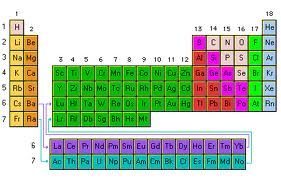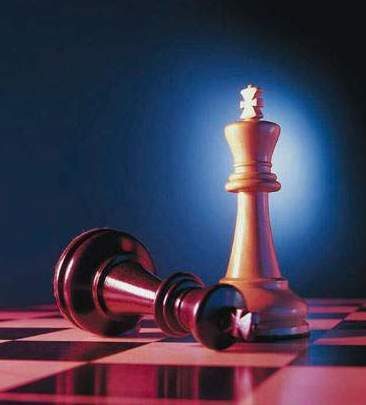 The periodic law is he foundation of the periodic table of elements, as the universal scheme that organizes, classifies and distributes the different existing chemical elements in relation to their characteristics and properties.
The periodic law is he foundation of the periodic table of elements, as the universal scheme that organizes, classifies and distributes the different existing chemical elements in relation to their characteristics and properties.
Base on which the periodic table of the elements sits
Meanwhile, the periodic law provides that the physical and chemical properties of the aforementioned elements are inclined to systematic repetition as the atomic number of the elements increases.
Periodic table: organization of the chemical elements in increasing order to the number of atoms that each one has
The so famous table of the elements that we study in school, in the subjects of physics and chemistry, is a scheme that deals with ordering the chemical elements according to their increasing order in terms of the number of atoms.
The vertical columns of the table are called groups and contain the elements with the same atomic valence and therefore have similar properties, while the horizontal rows, called periods, group the elements with different properties but have similar masses.
How this knowledge was advanced: specific and gradual events
It should be noted that all these concepts inherent to physics and chemistry were developed gradually and progressively during the nineteenth century.
We must say that some elements such as silver (Ag), gold (Au), copper (Cu), lead (Pb) and mercury (Hg), already had a perfect knowledge since ancient times, the first scientific discovery of an element happened during the course of the seventeenth century, when the alchemist Henning Brand first identified the element phosphorus (P).
In the following century, that is, in the 18th century, new elements began to be known, the most relevant being gases, thanks to the development of pneumatic chemistry, including oxygen (O), nitrogen (N) and hydrogen (H).
Around this time, the French chemist Antoine Lavoisier wrote a list of simple substances in which 33 elements already appeared.
In the early nineteenth century, the invention of the electric battery triggered the study of new chemical phenomena and this ended up generating the discovery of more elements, such as alkali and alkaline-earth metals.
By 1830, 55 elements had already been identified.
In the mid-nineteenth century, with the invention of a device called a spectroscope, more elements were found, especially those associated with color that presented their spectral lines, including cesium, thallium and rubidium, to name a few.
The spectroscope is an instrument used to observe and achieve a spectrum, being that this is the result of a dispersion of a series of radiation, sound or wave phenomena.
The similarity that certain elements presented in terms of chemical and physical properties led some scientists of that time to decide to order them systematically, to group them according to certain criteria.
The most remote antecedent that we have of the law in question is the well-known Law of Octaves, Developed by the English Chemist John Alexander Newlands, who proposed awakening a great novelty, that every eight elements we find ourselves facing similar properties.
This was the kickstart for him to formulate his own periodic table formally published in 1863.
As if one were in a post race, the glove in this sense was picked up by another chemist, in this case the German Julius Lothar Meyer, who using as a starting point the results of Newlands, in the year 1870, determined the atomic volumes of the elements.
Once he calculated the atomic weights and represented them, he was in a position to demonstrate to the world of science confirmation that atomic weight implies an increase in physical properties.
And almost simultaneously to the works of Meyer, Russian-born chemist Dimitri Mendeleev publishes the first periodic table, beating Meyer who would do it a year later and therefore he is the one who has remained with the merit of being its creator.
Mendeleev would order the elements in increasing order based on the atomic mass they presentMeanwhile, he placed those who shared some characteristic in the same column.
It is worth mentioning that by this time 63 elements of the 90 existing ones were already known.
The table was completed at the end of the 19th century with another group, called zero, and made up of noble gases.









